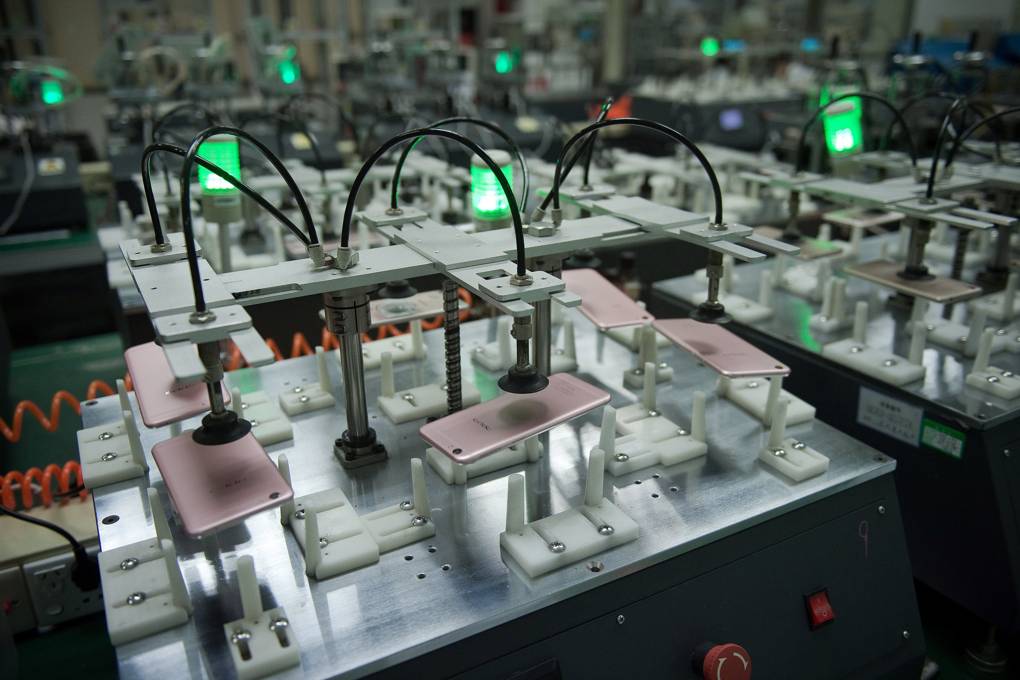The Internet as a source of pollution
Let’s start with the numbers: Internet pollution starts when you buy your computer, your phone or any other electronic device you might have. In the vast majority of cases, the manufacture of computers takes place in Asia, and more specifically China. The components of these computers contain many dangerous chemicals by the likes of cadmium, lead, beryllium, mercury and hexavalent chromium. Meanwhile, the French National Institute of Statistics and Economic Studies states that devices tend to go unused, either because they are not needed, or because newer products replace them. In 2016, 45 million tons of electrical and electronic waste (EWE) was produced, 80% of which was not recycled and instead ended up in nature, potentially damaging vital parts of the planet’s ecosystems and affecting biodiversity. Since devices need to be dismantled, remanufactured and transported, however, the recycling process can be environmentally costly as well.

Two researchers commissioned by the United Nations, Ruediger Kuehr and Eric Williams, have established that the production of a computer requires a minimum of 240 kilograms of fuel, 22 kilograms of chemicals and 1.5 tons of water, which adds up to the total weight of a car. But beyond environmental effects, as the Centre d’Expertise en Analyse Environnementale du Québec (CEAEQ) points out, the aforementioned materials could also cause health issues, such as hyperthyroidism and disorders of the nervous system to humans who come into contact with them.
While production is a large part of the environmental unfriendliness of electronic devices, another major but less known pollutant is the (daily use) of Internet. Today, there are more than 300 cables totalling almost 1 million kilometres that have been installed to enable Internet usage. It goes without saying that the installation of these cables at extreme depths of the sea has been a source of pollution.
Furthermore, the usage pollutes in itself; Internet usage accounts for 10% of the world’s electricity, the equivalent of the energy produced by 40 nuclear power plants. To understand this, it is necessary to consider the technical process of sending an email, which goes to the local and then national connection centres on to the United States (through the cables under the sea). There, the email is processed through and stored on servers before the message reaches its recipient, all in a matter of seconds. Sending an email generates between 4 to 25 grams of carbon emissions (if accompanied by an attachment), which you might think seems like an inconsequentially small amount. However, it is important to note that 300 billion emails are sent around the world daily, thus adding up to between 1.2 and 7.5 million tons of carbon dioxide emitted within a 24-hour window. Moreover, an internet search emits 7 grams of CO2, and 1.7 billion Facebook users each emit 269 grammes of CO2 per month according to Facebook first carbon footprint. The e-reader is another example, which has become popular for its practicality and is considered a simple method of limiting deforestation. However, an e-reader emits 250 times more CO2 than a book, so to balance a single e-reader’s ecological cost, you would have to read 80 books per year for 3 years.
All of our files, emails and social network information is stored in data centres – servers stacked in electronic cabinets that are constantly running to allow individuals to access their data in any place and at any time. The energy required to run and cool a data centre per day is equivalent to the energy needed for 50,000 people. There are 4618 data centres in the world. I’ll let you do the math.
/cdn.vox-cdn.com/uploads/chorus_image/image/51102245/14440633_10103136675873201_6012411229515107747_n.0.0.jpg)
What can be done to reduce this pollution?
Individual methods of limiting internet pollution:
- limiting the time spent on Netflix and video games
- opting for ecological search engines (Ecosia, Lilo, Ecogine)
- creating an “ecological” email (Mailo, Infomaniak, Ikoula, AISO, Green Web Hosting)
- deleting old emails regularly, emptying your trash and spam trays
- opting for a recycled or second-hand computer, or buy a more qualitative one
- only buying the electronic devices you actually need and have used for
- recycling old electronic devices
- turning off your computer if you go more than 30 minutes without using it; under 30 minutes, putting it into sleep mode
- limiting the number of mobile applications
- reducing the size of email attachments
- deleting unnecessary data from the cloud
- switching off the internet box when not in use (a box that runs 24 hours a day consumes 6.5TWH or the energy produced by a nuclear reactor)
- decreasing the quality of Youtube videos or other video/streamed content
- keeping the same phone for more than 2 years and a computer for more than 4 years

Institutional methods of limiting internet pollution:
- alterability of Netflix video quality, which has been done to temporarily reduce traffic amidst coronavirus curfews in Europe
- environmentally friendly cooling of data centres and the use of renewable energies to operate them
- automatically displaying energy consumption on the internet so that pollution is no longer as invisible to users
- a rental system for high tech products to combat programmed obsolescence and overproduction of electronic goods
Let’s be clear: this is not a petition to revert to a world without technological advancement – that is not the purpose of this article. The Internet, as we know, does not only come with downsides but with plenty of benefits as well. I simply wish to bring attention to the issue and identify potential solutions. Even if it seems a bit idealistic, it is up to our generation to build the future; it is up to us to reinvent consumption and lifestyles.
We have to be conscious of the causes of pollution in order to find solutions. That is the only way we can continue to take advantage of the tools that are at our disposal: by ensuring that the ways in which we use them are sustainable.
Featured image by Robin Worrall, @robin_rednine on Unsplash




